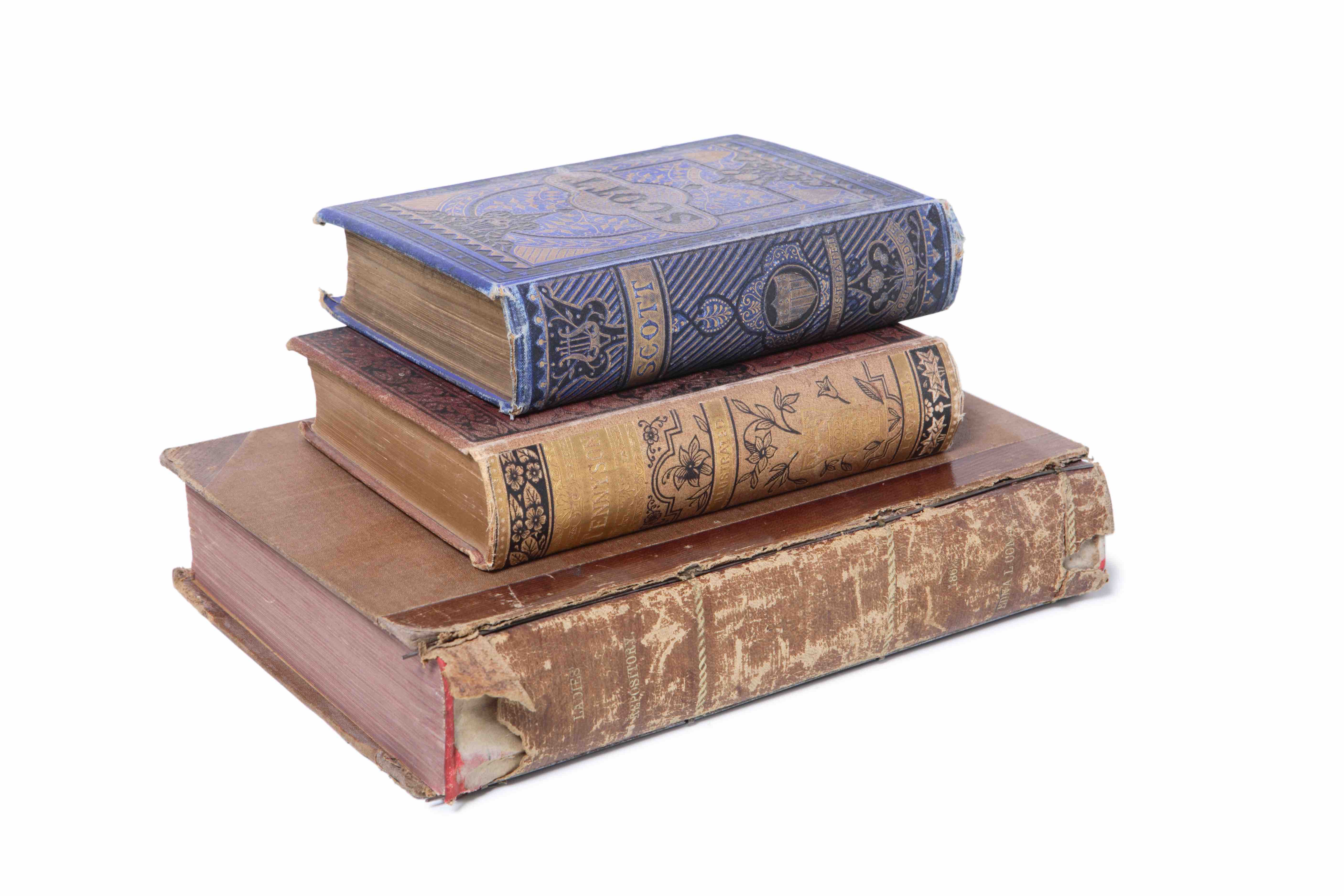Those overstuffed shelves of the latest releases aren’t always the best place to start when you’re shopping for a book to read (or to give as a Christmas gift). You can find plenty of out-of-print books with timeless appeal that are worth snapping up – if you know where to look.
Elizabeth von Arnim’s Introduction to Sally, for example, is almost 100 years old, but is a very enjoyable read if you can find a copy. Mr Pinner is a shopkeeper and he and his wife have longed for a child for years, so they are thrilled when their daughter is born. Mr Pinner wants to call her ‘Salvation’ but they compromise on ‘Salvatia’ (shortened to Sally). Sally grows up to be the most beautiful girl anyone has ever seen. She is so good-looking that Mr Pinner realises it is a challenge to protect her from the male gaze. Mrs Pinner dies when Sally is a teenager, and the responsibility of keeping Sally safe falls at Mr Pinner’s feet.
Sally starts working with her father in his shop and the number of customers crossing the threshold increases as everyone wants to get a glimpse of Sally. Mr Pinner decides to move to a rural premises in Cambridgeshire (with a high female population as its main selling point) to protect his daughter. But when she gets an offer of marriage from Jocelyn Luke, a bright and promising student, Mr Pinner is thrilled as he realises that the role of safeguarding Sally can be passed to her husband. Sally’s mother-in-law, however, is appalled at the match. She sees Sally as being beneath their family. She is distressed that her daughter-in-law has poor diction, and she winces every time Sally calls Jocelyn Luke her ‘’usband!’.
First published in 1926 by Macmillan and Co, the book has been out of print for many years. Von Arnim’s earlier titles Elizabeth and her German Garden and The Enchanted April have remained hugely popular, and Introduction to Sally retains the author’s signature sentiment. It is an amusing, farcical story that carries an Austenian sense of humour. Mr Pinner ‘married Mrs Pinner when they were both twenty, and by the time they were both thirty if he had had to do it again he wouldn’t have’. The relationship between Sally and her mother-in-law will also raise a smile. Sally is proud of her background; she is happily working class and she will not be changed.
The same cannot be said for Lady Norah Docker, whose Norah: The Autobiography of Lady Docker tells her incredible life story. It was published in 1969 by W.H. Allen and ghostwritten by showbusiness columnist Don Short, and it is the only authorised book on her life. She married three multi-millionaires (each of whom is assigned a chapter in the book) and held the accolade of being the only person banned from Monte Carlo for bad behaviour when she tore up the Monegasque flag following a dramatic falling-out with Prince and Princess Rainier.
Born above a butcher’s shop in Derby in 1906, Norah had big ambitions when she was young. She moved to London and started work at the Café de Paris before trying to secure a job in retail. Her anecdotes are marvellous: while she was being courted by three men simultaneously two gave her a gift of a diamond wristlet, which proved problematic as she had to remember to wear the correct bracelet with the correct beau.
While a work of non-fiction, the autobiography frequently wanders into the delightful realms of make-believe. If there was ever a book ready for film, this is it
She fell in love with her first husband, Clement Callingham, at the Café de Paris. They had a son called Lance before Clement died. Norah’s second husband was Sir Wilkie Collins, the chairman of Fortnum and Mason. Wilkie was significantly older than Norah, and following one of their many arguments, Wilkie disinherited her. However, she persuaded him to put her back into his will. He agreed but before he could sign it, he fell into a coma. According to Norah, Wilkie recovered some time later, and upon waking from his coma, following a walk around the grounds of their mansion, he demanded to sign the new will. Norah protested, wanting to wait for another day (she was more concerned about her husband’s health than the money, she says), but Wilkie argued harder, and so it was done. As soon as the will was signed reinstating Norah as his heir, Sir Wilkie Collins slipped back into a coma and died weeks later. Enter millionaire number three, Sir Bernard Docker – and plenty more drama.
While a work of non-fiction, the autobiography frequently wanders into the delightful realms of make-believe. If there was ever a book ready for film, this is it: Norah’s dialogue with her family and friends, her thoughts, memories and opinions are presented alongside a thorough description of the contents of each of her mansions and yacht, as well as in-depth depictions of articles in her wardrobe (undoubtedly useful for any filmmaker).
The aristocracy is in a different kind of trouble in F.M. Mayor’s The Squire’s Daughter. In this novel Sir Geoffrey De Lacy is struggling to run his mansion in the post-war world. The Squire’s daughter is Veronica (known as ‘Ron’), who gallivants around without a care as to her family’s plight. Her siblings, Oswald and Colette, are similarly only able to think of themselves. It is a brilliant observation of the dynamic between modern youth and the older generation. Ron does nothing but read erotic French novels and ride in fast cars while her father frets. Problems are posed but solutions are withheld.
When it was published in 1929 it had positive reviews. A critic in America’s Saturday Review of Literature said of the book’s subtle nature: ‘The older writers would undoubtedly have satisfied us. Their novels, once ended, would have been finished. But perhaps after all this newer is the greater art. Perhaps it is the very confusion that gives this book its illusion of reality. The author, like her people, sees no way out.’ We are currently enjoying a renaissance of F.M. Mayor’s work with the recently republished The Rector’s Daughter (first released in 1924) so surely there is room on our bookshelves for this title too.
Another book worthy of republication is E.M. Delafield’s Nothing is Safe. Delafield is best known for her hilarious novel The Diary of a Provincial Lady, about a woman juggling chaotic family life in the 1920s. Nothing is Safe, published in 1937 by Macmillan, occupies a similarly domestic sphere but shakes it up completely. It is a story of divorce told mainly from the perspective of the children. When the family separate and leave their lovely home in Hampstead, ten-year-old Julia wants to protect her younger brother, the quiet and sensitive Terry. Their mother’s new husband, the Captain, takes an instant dislike to the shy boy, mocking his fragility. On publication, the Aberdeen Press and Journal wrote that it was a book ‘by a humorist who is also a realist, and well done. The novel is notable’.
Other out-of-print books worth hunting down include The Green Knight by Iris Murdoch. Inspired by the medieval legend of Sir Gawain and the Green Knight, it is a complicated story set in London in the 1990s. It opens with a dramatic death (was it self-defence or murder?) and the suspenseful consequences are explored across genres of magical realism and contemporary fiction.
Elizabeth Jenkins’s Dr Gully’s Story is based on the unsolved Charles Bravo poisoning case of 1876. Jenkins gathered together ‘all the biographical material’ she could find on the story to inform her book published in 1972. Dr Gully was a renowned physician whose patients included Alfred Lord Tennyson and Thomas Carlyle. Dr Gully had an affair with a young married woman named Florence who went on to marry the eminent lawyer Charles Bravo. At the time, Dr Gully and Florence’s relationship had diluted to a friendship; however, on hearing news of her marriage to Bravo, Dr Gully became enraged. Bravo died months later from poisoning, and while Dr Gully (and Florence) were suspects in his death, they were found not guilty. Jenkins’s novel was well received by readers and critics alike.
The Heroes of Clone by Margaret Kennedy (published in 1957) is a captivating novel concerning a young man called Roy Collins, an uncultured chap but with a passion for cinema, who has the goal of writing a script for Hollywood. His subject for his film is the life of a famous Victorian female novelist whose biography is much more colourful than he first thought.
Where to buy them
If any of the above have whet your appetite, then you’ll need to know where to find out-of-print books. Here’s my pick of the best options:
Online
ABE Books allows you to search for out-of-print books and then will direct you to booksellers around the world that have them in stock. Biblio offers a similar service.
On the high street
- For beautiful and rare books or first editions, Peter Harrington in London is well worth a visit. The shop has branches in South Kensington (stocking more than 20,000 volumes) and Mayfair.
- The Antique Map and Bookshop in Puddletown, Dorset
- Peak Volumes in Tideswell, Derbyshire
- Petersfield Bookshop in Petersfield, Hampshire
- McNaughtan’s Bookshop and Gallery in Edinburgh
- Cornell Books Limited in Tewkesbury, Gloucestershire







Comments